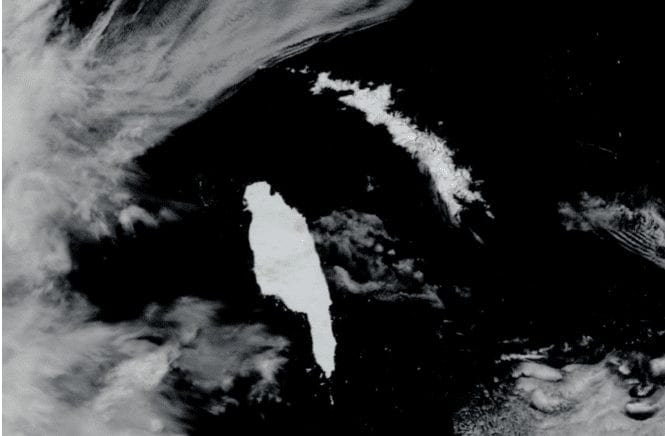The world’s largest ice cube is chilling, just sitting in the Antarctic like a block of ice floating in a well-crafted Old Fashioned cocktail.
The 95-mile-long, 30-mile-wide hunk of iceberg broke off from an Antarctic peninsula in 2017 and has been adrift at a depth of 500 to 600 feet for three years, moving slower than a snail in mud.
The iceberg, which needs a cooler name than A68, is expected to dock in an Antarctic wildlife sanctuary that is home to king penguins, elephant seals and endangered blue whales, according to National Geographic. The iceberg’s northbound path reversed course this year because of an ocean current that pushed it to the Southern Atlantic Ocean, National Geographic reported.
If it stops in shallow waters near the island of South Georgia as expected, the Delaware-sized iceberg could come apart in shallow waters. Images are showing that the fractures have begun.
“There’s always a chance it could shoot up north, or it could get grounded where it is for a period of time,” the U.S. National Ice Center’s Antarctic lead analyst, Chris Readinger, told National Geographic. “It looks like the highest probability is it would drift south of the island.”
Scientists believe this won’t be the last of the giant dislodged icebergs because of global warming. This is the third ice shelf to break off the Antarctic peninsula since 1995, as one of the fastest-warming regions on Earth. Readinger said 1-mile-long icebergs already have spun off A68, but bigger ones could separate.
Satellite images make the iceberg easy to spot. It looks like a pointer hand that would be put on a map as a locator.


















Add comment